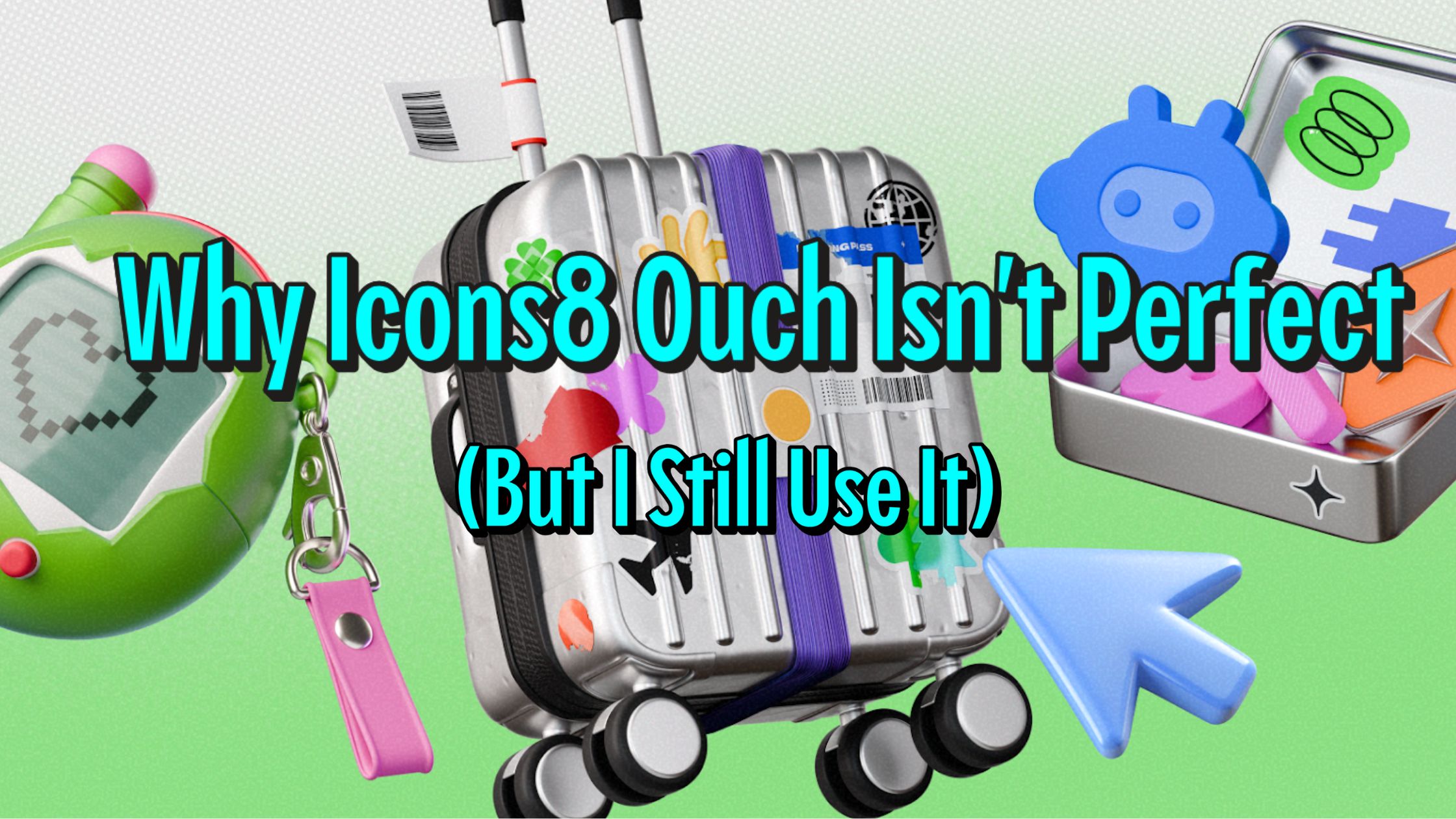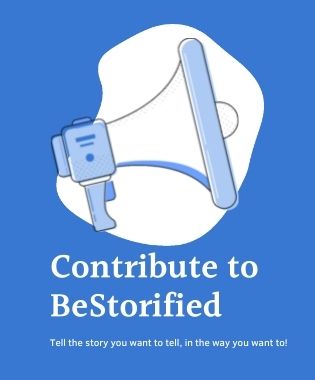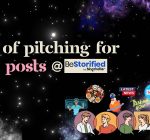Why Icons8 Ouch Isn’t Perfect (But I Still Use It)
- June 11, 2025
- Trends
Illustration hunting drives me crazy. You scroll through endless stock sites, bookmark dozens of “almost perfect” options, then use none because something’s always off. Icons8 built Ouch claiming their editable illustrations would solve this headache. After using it on actual paying projects for months, the truth is more complicated than their sales pitch suggests.
What’s Actually in There
The platform organizes illustrations into twenty-one different styles, which felt excessive when I first signed up. Working with various clients changed my mind quickly. Corporate geometric styles work perfectly for enterprise dashboards. Playful character illustrations suit consumer mobile apps. Technical diagrams handle documentation without looking like amateur hour. Each style maintains visual consistency, avoiding that “assembled from random clip art” disaster that kills credibility.
The game-changing difference from typical stock libraries is modular construction. Most illustration sites give you finished files – take them exactly as-is or move on. Ouch breaks everything into separate, editable pieces. Characters exist independently from backgrounds. Objects sit on distinct layers. Effects operate as standalone components. This approach means finding something 60% right and fixing the rest often beats hours of fruitless searching.
File format support covers industry requirements without unnecessary bells and whistles. SVG maintains sharp quality at any scale – essential for responsive designs across devices. PNG provides backup when SVG creates browser compatibility headaches. Animation formats include GIF for social platforms, MOV for presentations, Lottie JSON for web implementations. After Effects files accommodate motion design workflows. Solid coverage without feature creep.
How Editing Really Happens
The component system completely transforms your illustration sourcing approach. Instead of hunting for impossible perfect matches, you grab usable foundations and modify problem areas. Swap character clothing. Replace background elements. Completely change color schemes. Rearrange compositional elements. Each piece operates independently, preventing modifications from creating unexpected cascading problems.
Mega Creator handles editing through browser interface without requiring expensive software subscriptions. Drag elements around. Change colors with standard picker tools. Scale components bigger or smaller. It won’t replace professional design software for complex projects, but manages routine tweaks without Adobe’s monthly fees or steep learning curves.
Developer Implementation Reality
Frontend teams integrate these into user interfaces as functional elements, not decorative fluff. Onboarding sequences require clear visual progression. Empty states need explanatory graphics that don’t confuse users. Error pages benefit from appropriate imagery that doesn’t feel patronizing. Loading animations provide engaging content while systems process background tasks.
Responsive behavior works reliably because SVG scales smoothly across screen sizes. Component architecture adapts to different viewport constraints through CSS manipulation. Standard development approach with predictable, consistent results.
Children’s gaming platforms and educational software often need colorful, modular graphics for their interfaces. The lego clipart collection provides building-block style illustrations perfect for creative applications, educational games, and interactive learning environments targeting younger users.
Marketing Team Struggles
Content marketing requires visual consistency across blog posts, email campaigns, social media, landing pages without hiring illustrators for every piece. Brand coherence trumps individual illustration perfection when building long-term recognition and trust with audiences.
Email campaigns hit specific technical roadblocks that catch teams off guard. Large files get flagged by spam filters. Complex animations slow mobile loading times significantly. Ouch’s SVG animations stay lightweight while adding visual engagement without creating deliverability nightmares. Brand color modifications maintain consistency without rebuilding everything from ground zero.
Developer Workflow Methods
Asset access happens through multiple channels depending on team preferences and existing workflows. Desktop application enables direct drag-and-drop into Sketch, Figma, Photoshop, code editors like VS Code. API endpoints support automated workflows and dynamic content generation for organizations requiring systematic asset management approaches.
Version control handles SVG files smoothly since they’re XML-based underneath the hood. Teams collaborate on illustration modifications through standard Git workflows and branching strategies. Build processes automate optimization and format conversion for production without manual intervention steps slowing deployments.
Educational Institution Applications
Schools and universities deploy illustrations throughout learning management systems and curriculum development workflows. Visual learning approaches require consistent styling across course materials, lecture presentations, assessment interfaces, supplementary educational resources. Education-focused collections address specific teaching requirements like concept visualization and step-by-step process explanation.
Research institutions extend usage to conference presentations, academic journal submissions, grant proposal documentation, institutional communications. Institutional branding requirements integrate through color customization while maintaining professional academic standards and credibility.
Small Business Economic Reality
Early-stage companies face brutal financial constraints around visual content creation. Professional custom illustration work exceeds most available budgets by significant margins. Free resources often look cheap enough to damage credibility with potential customers and investors. Ouch’s pricing structure acknowledges these harsh realities with practical, affordable options.
Free usage with attribution requirements works for internal tools and MVP development phases. Twenty-four dollar monthly plans eliminate attribution while unlocking additional formats and priority support. This progression accommodates natural growth from bootstrap startup to funded company requiring complete brand control.
Licensing Structure Details
Usage terms accommodate different organizational constraints and operational requirements effectively. Free tier demands attribution linking back to Icons8 – acceptable for internal applications but problematic for client-facing products where brand control matters significantly. Paid subscriptions remove attribution requirements while providing enhanced format access and faster support response times.
Educational institutions qualify for discounted pricing structures designed for budget-conscious academic environments. Team management features include user access controls and detailed usage tracking analytics. Enterprise customers access white-label service options and dedicated account management for large-scale implementation projects.
Performance Measurement Approaches
Implementation success measures through concrete, quantifiable metrics rather than subjective aesthetic judgments. User comprehension improvements in interface workflows, engagement duration increases on content pages, conversion rate optimization in marketing and sales funnels, brand perception enhancement through user research studies, customer support ticket reduction through clearer visual communication strategies.
Technical performance considerations include file size impact on page loading speeds, cross-browser compatibility requirements, mobile device optimization, accessibility compliance standards. SVG implementations typically outperform bitmap image alternatives while providing superior scalability and modification flexibility for future updates.
Platform Weaknesses and Gaps
Highly specialized industries encounter significant limitations that generic illustration libraries struggle to address consistently. Medical documentation requires anatomical precision beyond general illustration capabilities. Industrial process diagrams need specific technical accuracy standards. Scientific research visualization demands exact representational fidelity that broad-market collections can’t reliably provide.
Attribution requirements create operational complications for white-label products or client service work requiring complete brand control and customization flexibility. Free tier usage works adequately for internal project development but becomes problematic in commercial applications where attribution conflicts with client branding requirements and professional expectations.
Development Progress and Direction
Recent platform improvements include AI-powered illustration generation capabilities, expanded animation format support, enhanced integration with industry-standard design tools like Figma and Sketch. Development velocity and consistent feature releases indicate ongoing platform investment rather than maintenance-only operational status.
The broader Icons8 ecosystem integration encompasses icon libraries, stock photography collections, audio resource libraries, design application tools. This unified approach simplifies vendor relationship management and billing consolidation for organizations requiring comprehensive digital asset management solutions.
Honest Bottom Line After Extended Use
Icons8 Ouch handles illustration requirements for most standard professional design contexts reasonably well, though not perfectly. The modular component architecture, comprehensive file format variety, flexible pricing model solve common workflow bottlenecks and budget constraints. Highly specialized applications require custom solutions, but routine design work benefits from the systematic, scalable approach.
Component-based design philosophy aligns with contemporary development practices emphasizing modularity, reusability, brand consistency across multiple touchpoints. Web developers, marketing professionals, software engineers, educational staff, resource-constrained organizations find practical value in this visual asset management approach despite its limitations.
Success requires realistic evaluation of specific organizational needs against documented platform capabilities and acknowledged constraints. Teams that understand both strengths and limitations achieve better workflow efficiency and visual communication results than those expecting universal solutions to specialized design challenges.
This is a guest post by Lindsay
- Is Media Mister the Most Reliable Site for Social Media Growth in 2026?
- From Zero to Viral: A Beginner’s Guide to Spotify Promotion
- Add Animated Text Effects Quickly with Lyric Video Creator
- How Taylor Swift turns a dead girl trope into a survival story- The Fate of Ophelia
- What NCRB’s suicide numbers say about how we raise boys






